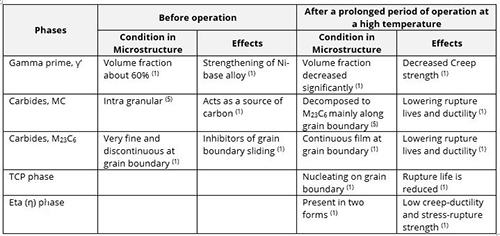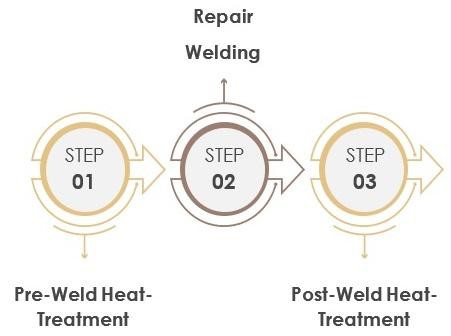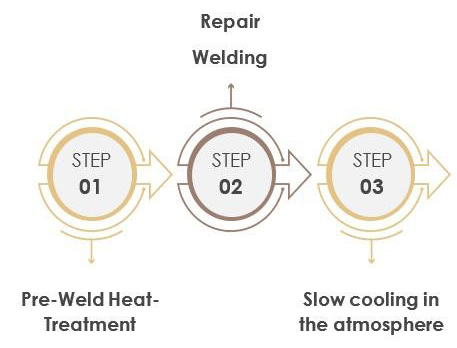Development of Repair Mechanism and Life Estimation of IN-939 Based Powerplant Components: Part Three
by Md. Tawfiqur Rahman
Abstract
To help meet the ever increasing demands of fossil fuel powerplants and the associated stringent efficiency requirements, all aspects of material selection are critical to ensuring an overall increased material lifecycle within the plant.
During this investigation two distinct repair methodologies were used; pre- and post-weld heat treatment and TIG welding using suitable filler metals for turbine blades and TIG welding repair using suitable filler metal followed by a post-weld Heat treatment for turbine vanes.
APPROACH AND METHODOLOGY:
IN 939 falls into the group of the nickel-based precipitation hardened superalloy. Gas turbine manufacturing companies like Alstom, Siemens, Simens-Westing house use this superalloy as their nozzle material. Besides, it is also used as a material for retaining ring, diffuser, and other structural members of the gas turbine. [4][5] By reducing the maintenance cost of the power plant, the cost of electricity can be minimized. For this reason, the author studied the microstructural degradation mechanism of IN 939 and will develop a repair mechanism for them by using TIG welding and heat treatment. This enables gas turbine users to repair cracked IN 939 based nozzles and use them further. And as a result, the extra replacement cost can be avoided.
Study of the microstructure of IN 939 shows the following observations:

Table 1: Major changes in phases of IN 939 microstructure before and after service: Note. (1) From “ASM Specialty Handbook: Heat-Resistant Materials,” by Joseph R. Davis,1st ASM International, p. 224-233. and (5) Delargy, K. M., & Smith, G. D. (1983). The phase composition and phase stability of a high-chromium nickel-based superalloy, IN939. Metallurgical Transactions A.
Due to the detrimental effects of microstructural degradation, IN939 based gas turbine components are fractured. IN939 is a nickel-based superalloy. So, the fractures in it can be repaired by TIG welding. [6] In the preceding paragraph a proposed mechanism of the repair welding process of IN939 based gas turbine components will be described.
Repair of IN 939 Based Gas Turbine components:
The repair process will be of two types and service dependent. In the first group where the components operate under higher stresses like turbine blades the process consisting of both pre- and post-weld heat treatment and TIG welding using suitable filler metal. On the other hand, in the second group where the components operate under lower stresses like the turbine vanes the process consisting of TIG welding repair using suitable filler metal followed by a post-weld Heat treatment.

Figure 1: WORKFLOW OF TYPE-1 REPAIR MAINTENANCE WORK

Figure 2: WORKFLOW OF TYPE-2 REPAIR MAINTENANCE WORK

Table 2: WELDING SPECIFICATIONS FOR TYPE-1 and TYPE-2 REPAIR MAINTENANCE WORK
Read more
- Development of Repair Mechanism and Life Estimation of IN-939 Based Powerplant Components: Part One
- Development of Repair Mechanism and Life Estimation of IN-939 Based Powerplant Components: Part Two
- Development of Repair Mechanism and Life Estimation of IN-939 Based Powerplant Components: Part Four
Find Instantly Thousands of Welding Materials!
Total Materia Horizon contains thousands of materials suitable for welding and electrodes, with their properties in bulk and as welded conditions.

Get a FREE test account at Total Materia Horizon and join a community of over 500,000 users from more than 120 countries.